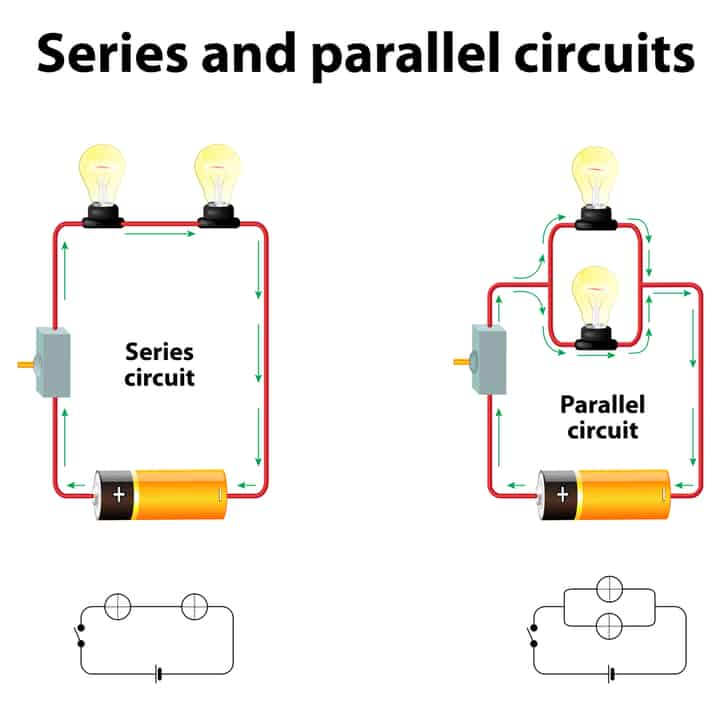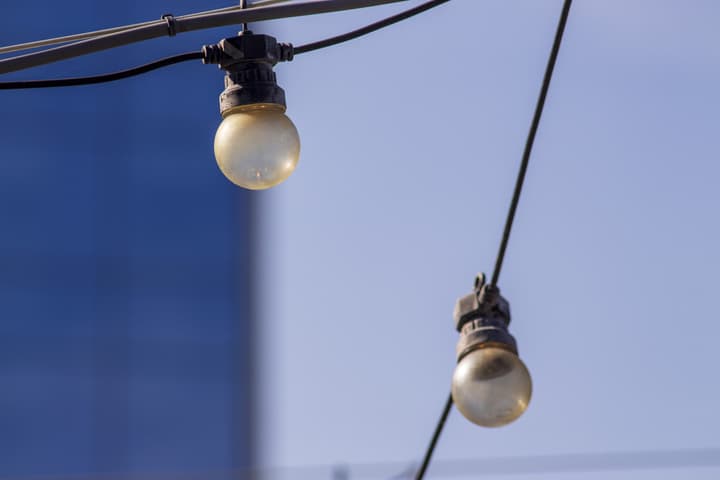When you’re measuring your outdoor space to check how many lengths of string lights you need, it’s unlikely that you’ll find string lights that perfectly fit.
While they’re available in various sizes, they aren’t entirely custom, so you’re likely to have a length leftover once you’ve finished your setup.
You are watching: Can Patio String Lights Be Shortened?
Can you just cut that extra wire off without impacting the rest of the wire and causing all the bulbs to break?
Providing your string lights are wired in parallel, then cutting the wire short is fine – the rest of the lights will still work. Most outdoor string lights are wired in parallel, but not all. If you cut your wire short, you’ll need to protect the exposed wire at the cutting point.
Read on to find out more about whether you can cut your outdoor string lights, including the differences between series and parallel circuits, and a quick guide on how to shorten your lights (including options if you can’t cut them).
Can You Cut Outdoor String Lights?

Strip lights and string lights share many common features, but the ability to cut them slightly differs.
Strip lights designed for indoor use have cutting lines that tell you where they’re safe to cut to keep the LEDs working.
Strip lights are split into multiple mini circuits. As long as you cut along a designated line, you remove an entire circuit, so all the prior LEDs will still work.
String lights don’t tend to have those cutting lines, so can you cut them?
Surprisingly, most of the time you can, although it depends on how your string lights are wired.
Series vs Parallel Circuit

Firstly, a quick guide to series and parallel circuits and what those terms mean.
Not every electrical circuit is wired the same. Sometimes they’re wired all in one constant loop.
So the current will pass from the power source through the first bulb, the second bulb before the wire returns to the power source after it has passed through every other component of the circuit.
In these circuits, every component is wired in series, one after the other. And so, all of the components rely on each other.
If one light blows in a series lighting circuit, that breaks the entire chain, so the current can’t flow, meaning none of the lights will work.
The other downside to a series circuit is that all of the demand on the power supply is on one loop, pushing the supply to its limits, causing lights or components near the end of the circuit to not receive all the power they need.
Read more : Should I Shade My Outside AC Unit?
Parallel circuits are designed to combat both of these issues. In a parallel circuit, there are multiple loops within a circuit.
There may be a connection back to the power source after each light, or it might be every few lights – that’s how LED strips work.
If a component fails, only the rest of the components on that particular loop have their circuit broken.
The rest still have a complete circuit and so can still draw power.
It also splits the demand so that each loop only carries the necessary power for each bulb without overloading the power supply.
Parallel circuits are always the better choice for electrical wiring because they reduce the load and the risk if one component fails.
But they’re often more expensive because the wiring in parallel is a little more work.
Most indoor string lights are wired in series because they’re super cheap.
But outdoor lights are at the risk of the elements, and they’re hung in harder-to-access places – once you’ve installed the patio lights, you want to know they’ll keep working.
And so most are wired in parallel, because that way if one bulb breaks you’ll still have the rest of your string lights to rely on.
How To Shorten Outdoor Patio String Lights?

If you need to shorten your patio string lights, the easiest and most attractive option is to cut them, provided your string lights are wired in parallel.
This isn’t usually advertised on the packaging or the online product description.
Although, it’s likely that if the lights come with any kind of instruction manual, they will mention whether they can be cut or not.
And if you’re still not sure, but the bulbs are removable, try removing one and seeing if the rest of the bulbs still light up. They’re wired in parallel if they do, and it’s safe to cut.
If you are cutting the wire, do it with the power off!
You’re cutting through electrical wire, and you don’t want to do that when there’s a current running through it.
You’ll need to properly cap off the wire to seal it, and because the lights are outdoors, you’ll need to make sure it’s waterproof.
Read more : What Size Is the Standard Outdoor Faucet?
You can use a waterproof wire connector (even though you’re not connecting the wire) or you can use waterproof electrical tape – either self-sealing silicone tape or liquid electrical tape as long as it’s designed for outdoor use.
This is a really important step – if you don’t waterproof the wire securely, you risk water getting into the circuit, which could cause it to short and turn your entire string of lights into a fire hazard.
Don’t cut corners here.

Now, if you can’t cut your string lights or you can’t tell whether they’re wired in series or parallel, you’ve got a couple of options.
Number one is to hide the remaining lights in a small, sealed box.
Just run the end of the wire into the box, layering the bulbs, then close it and mount the box near where your string lights are anchored.
This will stop the light from the extra bulbs from looking untidy if left hanging, and as long as you buy a small box, it will be discreet enough that you won’t notice it at night.
The second option is to look at how you’ve hung the lights – are they taut, and could you instead change the setup to have them dip slightly in the middle?
You can easily ‘use up’ a space a couple of feet if you have a long, gentle arc instead of a tight straight line.
Both of these solutions work best if your string lights are only a couple of extra feet longer than they need to be.
You must measure before you buy and get the right amount of patio lights for your space – or at least as close to it as possible.
If you’ve bought 50 feet of lights, but you only need 25, you may need to return them and buy a new shorter string instead.
Final Words
If you’re used to working with indoor string lights, you’d probably be surprised to realize that most outdoor lights are already wired in parallel, but when you consider the expense you’re going to pay, it should be the minimum expectation.
The last thing you want to do is spend all of that time and money installing a beautiful perimeter of string lights and then have one blown bulb wreck the whole lot.
But, there are some cheap outdoor lights, so make sure you don’t cut them before you check.
If you’re really unsure and don’t want to risk ruining your lights, then hiding the excess in a sealed box or re-arranging your setup to allow them to dip slightly is a safer bet.
Have you had any bad luck finding suitable string light sizes for your outdoor space?
Or have you got any other tips on shortening your string lights to suit your home?
Source: https://gardencourte.com
Categories: Outdoor


